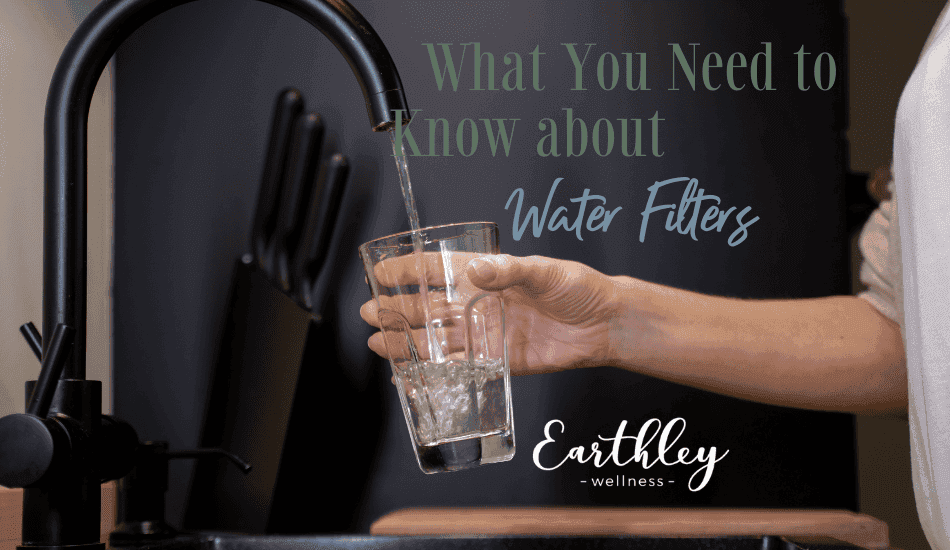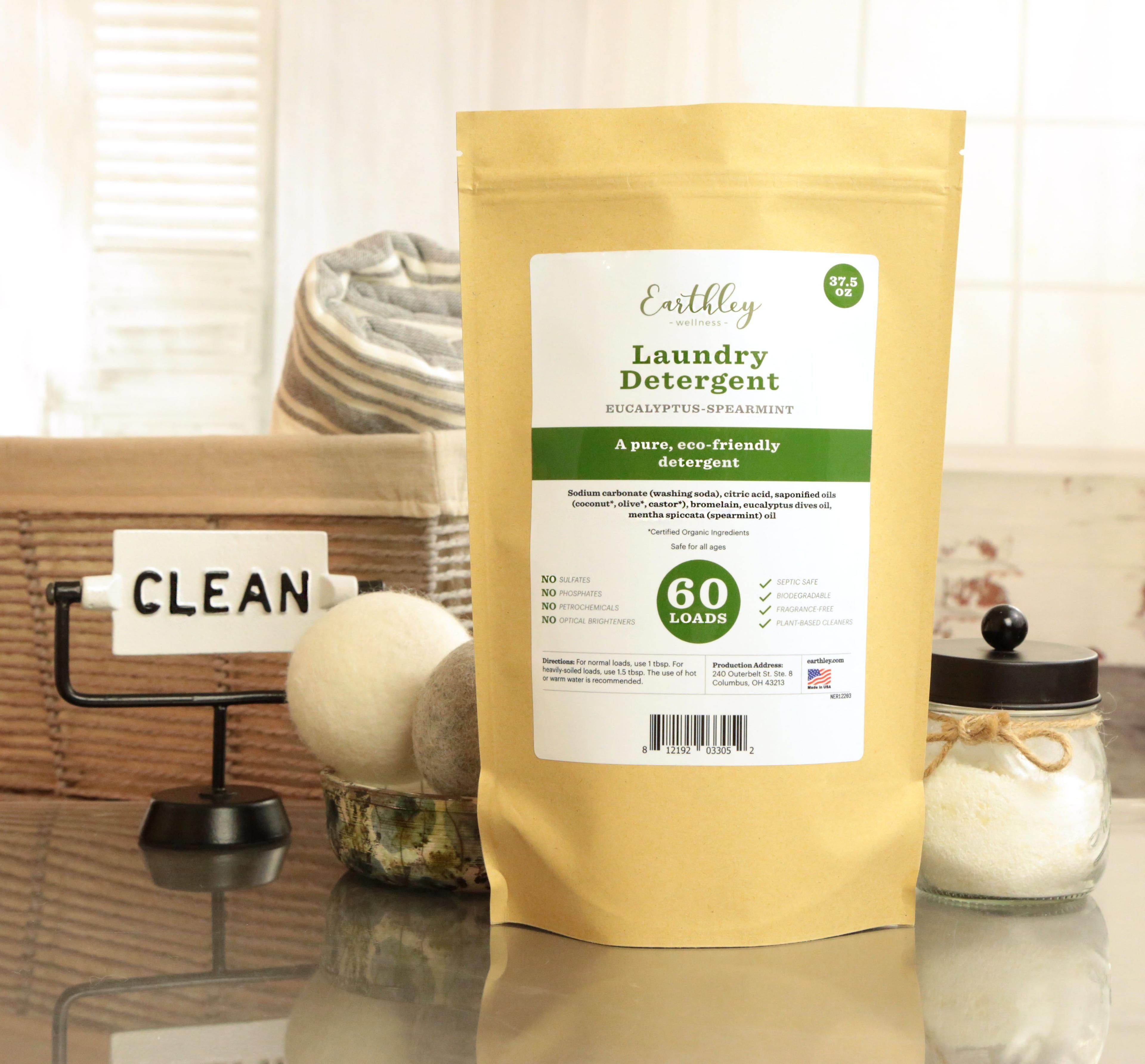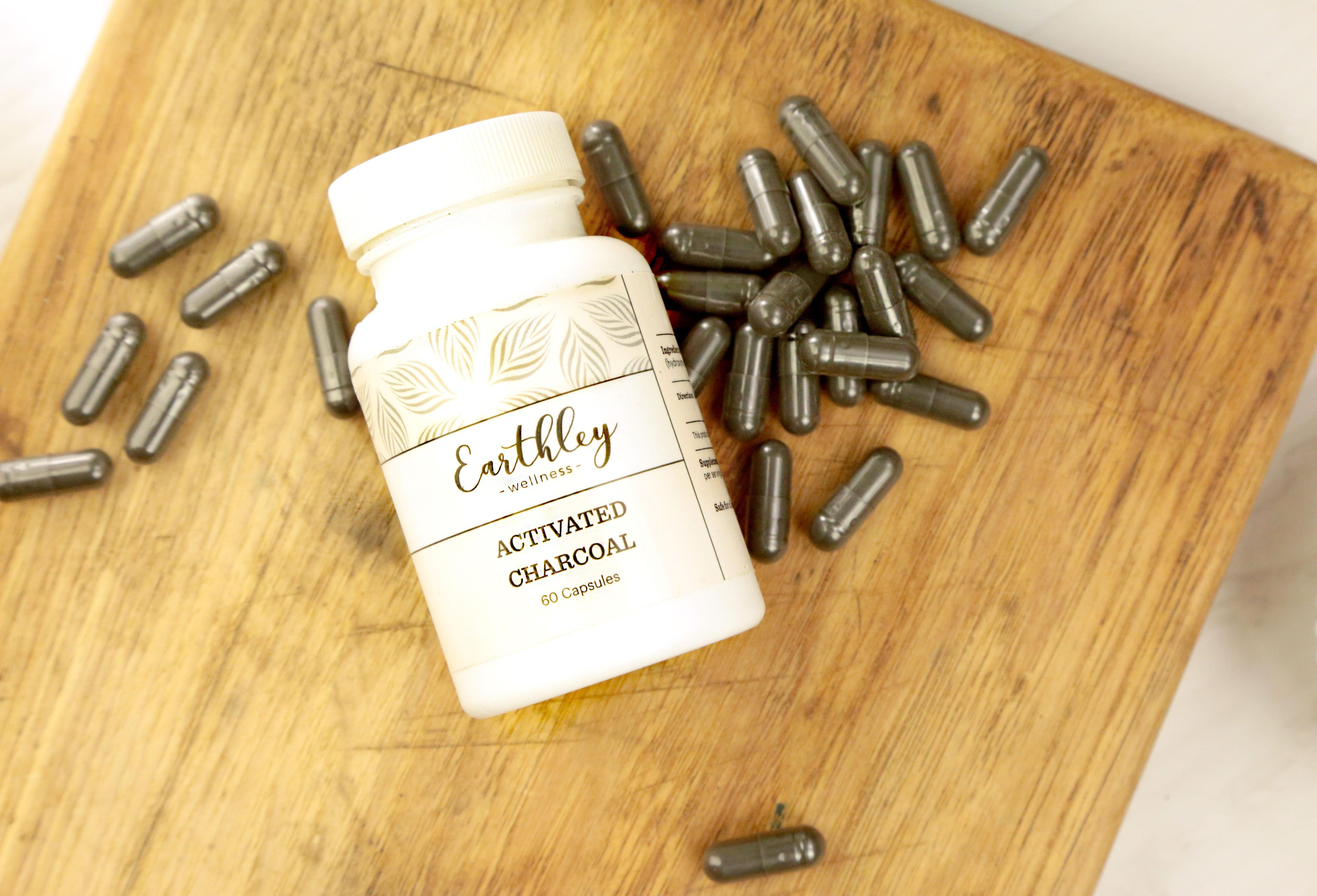What You Need to Know about Water Filters

Water is essential to everything in this world. It makes so much of our Earth and our bodies (about 70% of both things). Having a refreshing glass of cool water, soaking in a warm bath, or watching our kids splash around in the backyard pool are some of the most soothing small acts we can do on a rough day. We want to know that we have good-quality water when we partake in these activities!
In our homestead, having a quality whole-house water filter was at the top of our list. Clean water matters so much to overall health…and trusting the current filtering of our drinking water wasn’t cutting it.
This is such a complicated topic, with so many different companies offering options, all claiming that theirs is the best. Every system has different components, so there are multiple ways the water is being filtered. What's in our water? What’s truly best? And how are you supposed to know?
What’s In Our Water?
It seems like the water from the tap should be safe and healthy…because why would the government do something if it weren’t safe?! (Oh, how I wish that were true. But it never is.)
Unfortunately, the way that water is filtered in treatment plants isn’t entirely adequate to clean water. This is basically how water is filtered in treatment plants. (It may vary in different areas.)
After this process, water may still contain:
- Bacteria
- Viruses
- Drugs *
- Chlorine +
- Fluoride +
- Nitrates ^
- …and more
* Drugs get into the system because people either flush unused prescriptions, or when they consume them and unmetabolized drugs are excreted from their bodies. All of these drugs aren’t completely removed from the water, and we obviously shouldn’t be exposed to these chemicals!
+ Added on purpose by the water filtration plant in most cases (fluoride can be naturally occurring and about 1/3 of the areas in the US do not add it).
^ From farm runoff. Phosphates and other farming chemicals may be high in certain communities.
If you check Google, you can find your city’s water report, to see if they are in compliance with the EPA laws for contaminants. But the EPA doesn’t place limits on prescription drugs and some of these other contaminants, so even if your water is “compliant,” it may still be contaminated. And that’s a problem!
In today’s world, there are so many toxins out there. We have to wonder about additives in our food to pharmaceuticals and other chemicals in our drinking water or even in pool water! If you are looking for some help to get started, check out this list of The Toxic Twenty and How to Ditch Them.
Why It Matters
The dream that we all have is pure, safe water to drink, to bathe in, to wash our clothes in! It’s bad enough we have to worry about what is in the laundry detergent! Looking for a safe, natural laundry detergent, try ours!
We all obviously want to remove the contaminants that shouldn’t be there, like chlorine, pesticides, and herbicides. And, we want to remove dangerous bacteria or viruses that could make us sick -- especially the parasites!
But there’s more to this than that. What is biologically normal water? What kind of water are we supposed to drink?
Some systems make a big deal out of being “pure,” and completely free of everything. Other systems make a big deal out of leaving in beneficial minerals, which they say is needed because our soils are so depleted. Still others make a big deal out of the “proper” water pH level….
In nature, water is not pure. It has quite a few trace minerals, like calcium, phosphorus, magnesium, potassium, and others. It also has a normal pH of around 8 or so. This seems to be the water that we were meant to drink.
So, that’s our goal: to end up with a water that has a slightly alkaline pH, that retains beneficial minerals, and that is otherwise as “pure” as possible.
We know everyone is concerned about water quality, especially with increasing concerns with chemical spills and runoff near water sources. One way to get quick and helpful feedback on water quality is to use pH test strips; you can test both rainwater and tap water. There are also options that come with bacteria test kits. Most hardware stores or Amazon also have more thorough and sensitive test options that can be sent into a lab for analysis.
If you are concerned you have been exposed to certain chemicals, you can look up more about toxicity through PubMed. Here are some often asked about chemicals currently: Vinyl Chloride Toxicity (generally does not build up in tissue, eliminated through kidneys so supporting the body through normal detox pathways is helpful, and removed from water by carbon filters), Hydrogen Chloride (a quick warning sign of exposure is irritation of the eyes, throat, or other mucous membranes and can be removed from the air using Magnesium-aluminum oxide filtration), and Phosgene (has varied signs of exposure, but often respiratory tract issues and building of fluid in lungs noticed quickly).
What Types of Filters Exist
So, what are we supposed to do? What kind of water filtration should we be using?
First, I don’t recommend any of the pitchers that filter water. These pretty much just filter out chlorine, but nothing else. They don’t filter out enough “stuff” to be worth it, so we’re just going to ignore these. Instead, we’re going to look at the types of water filters for countertop, under the sink, and whole-house systems.
There are 5 basic types of water filters with different purposes:
#1 Mechanical - which literally just catches any bad stuff because the particles are too big to go through a membrane of some sort. The filters are rated for the size of particles it blocks from as little as 0.5, 1, or to “naked eye visible” 5 micron are the common sizes. There are some .35 micron filtration, but they do have a higher cost.
#2 Absorption - filters that will “soak up” contaminants such as chlorine and hold them in the filter. These are most often made of carbon.
#3 Sequestration - chemically traps minerals like calcium and magnesium using usually polyphosphate to keep the water from causing limescale – usually only recommended for “hard water” issues. (You can test your water hardness with this test strip)
#4 Ion Exchange - this softens the water by removing the harder minerals and replacing them with sodium or hydrogen. To prevent sodium levels being too high in drinking water, hydrogen filters are a better option in that regard.
#5 Reverse Osmosis - this system puts the water through a membrane usually made of polymers, mostly cellulose acetate or composite polyamide. This membrane traps many contaminants but like sequestration and ion exchange, usually needs to be combined with a mechanical or absorption option also.
How They Work
Most systems have a combination of these different types of filtration in order to purify water the most.
Pre-Filtration
Every system uses some version of a pre-filtration set up. It’s essentially some kind of membrane with holes that are 1 micron in size (that’s 1/25,000 of an inch). This catches all types of sediment and junk that shouldn’t be in the water, plus larger bacteria.
It’s a start, but it won’t make water truly safe. A lot of the “bad” stuff is much smaller in size than this, or is dissolved in the water and can’t be physically separated.
Filtration
Copper-Zinc Mineral Stone
Essentially, this is an electromagnetic reaction between the copper and zinc and other minerals/heavy metals in the water. It helps to remove chlorine, iron (which may not necessarily be beneficial), and may reduce bacteria and viruses somewhat. It isn’t adequate as a filter on its own, but its use can make carbon filters last longer, so it’s often used in conjunction with those.
Carbon Filter
Activated carbon is a highly porous surface that adsorbs (yes, with a ‘d’) a lot of bacteria, viruses, pesticides, herbicides, and other contaminants, trapping them on its surface and removing them from water. It won’t remove nitrates or fluoride, which is a big deal for many. Well — it will remove some fluoride, but its capacity to do so expires rather quickly, long before its capacity to filter everything else expires.
To make this more complicated, carbon can be made in different “levels” and from different materials (like wood and coconut shells), and it can be more or less effective, depending on these factors. Coconut shells are considered better quality carbon, but also more expensive. RO filters are often paired with them to remove the worst of the contaminants before it gets to the end.
Bone Char Filter
This is very similar to activated carbon. Both are produced by burning a material without oxygen presence. But while activated charcoal is some plant material, bone char comes from the bones of animals, usually beef bones. This is important, because it’s high in calcium, and it chemically reacts with fluoride and essentially removes it from the water. This turns fluoride into an inert substance. It also removes arsenic.
This is ethically questionable for some since there’s the use of animal bones. And, I can’t find clear data on whether or not it removes other metals, like magnesium. No one seems to have studied that, but knowing that most other methods that remove fluoride also remove all beneficial minerals, I'm leery it may as well. (2,3)
Activated Aluminum Filter
This is another method that removes fluoride and arsenic, but some believe that aluminum can then leach into the water, and that causes its own problems.(4) This is what the Berkey white filters are made of — aluminum oxide. I can’t find test results on whether or not these remove beneficial minerals, although there are claims they do not.
UV Light Filter
This is a type of filter that uses special light to kill bacteria and viruses. It’s not enough on its own, but it is sometimes the final (and useful) step in a filtration process. There are no known “issues” with this type of filtration as an additive.
Reverse Osmosis Filter
Then, we get to the RO. This technology was originally created to desalinate sea water (remove the salt) and it’s very effective at this. However, it does not remove all contaminants…especially chlorine, VOCs, and some bacteria and viruses. It’s usually paired with a carbon filter for this reason. It does strip the water of important trace minerals, like calcium, potassium, and magnesium, and it leaves the water with an acidic pH. It’s basically just good for removing salt and fluoride.
The WHO considers water that is stripped of these beneficial minerals to be unhealthy. In fact, in a report they issued, “The final report, published in 1980 as an internal working document, concluded that “not only does (RO) completely demineralized water (distillate) have unsatisfactory organoleptic properties, but it also has a definite adverse influence on the animal and human organisms.”(5)
One study shows that when RO water is used for cooking, it leaches minerals from food significantly. This “soft” water consumption has been associated with increased risks of pregnancy complications, cancer, and death.
Another study showed an association between RO water and B-12 deficiency…which too many of us lack already!
Yet another study called the water “biologically unstable” and showed that it is a potential breeding ground for bacteria…which is kind of the opposite of what we’re going for.
Although it doesn’t matter as much, the perception of the water as “fresh” was lower with RO water, and adding back minerals (especially calcium) increased the perception of freshness and taste. (6)
The water is also tough on pipes, and can leach minerals from them…which may be minerals you don’t want in your water. Many pipes have iron, some old ones still have lead…. At any rate, this is not ideal.
RO water also wastes a lot of water because the system requires flushing and can’t all be properly filtered.
As a side note, we’ve had RO water in bottles for a while and I always feel so much thirstier when I drink it…it feels wrong…which is what started me researching why that might be. It’s likely because it is leaching minerals from the body…creating a deficiency of electrolytes and vitamins…and harming health over time.
What About Remineralizing the Water?
I looked into this option, although to be fair, I was already against it. I had tried two of the top clean, pure organic minerals supplements in the past, and both had given me bad headaches. But I wanted to understand why.
One brand, ConcenTrace, is simply concentrated water from the Great Salt Lake. I saw no guarantees that it was free of contaminants, and as it’s exposed to the same environmental concerns as is the rest of our water…why would it be clean? It adds back some fluoride and other things that RO strips, so this doesn’t seem beneficial to me!
Another brand, Dr. Berg’s, has a long list of trace minerals that are in it, including bromine, cesium, and other elements we don’t really want in our water…and the statement that the minerals in the product “include, but are not limited to…” That doesn’t seem like a safe option, either.
Even if there were a truly safe, contaminant-free mineral supplement to add back to the water, it would depend what form the minerals were in, how much was in it, etc. And, it’s yet another step to create drinkable water, and one that’s unnecessary if you don’t strip it all out in the first place (for very little benefit).
What We Recommend
We can eliminate RO filters immediately, because the water has serious drawbacks and, in my opinion, not a lot of benefits. It’s also more expensive. Frankly, I consider it dangerous for many, and I would never have one in my home.
A combination of a quality carbon filter made from coconut shells, with copper-zinc mineral stone, and a UV filter seems to be optimal. If fluoride is a huge concern for you (and it won’t be if you are on well water or one of the 1/3 of people whose cities do not fluoridate), then you could add a bone char filter too. Although I’d like to see more research on the bone char option, personally.
Which Water Filtration Systems Are Out There Right Now?
Now that we know what we’re looking for…let’s look at the systems out there and see which ones meet those needs!
Most systems have a “sediment pre-filter” which is just a membrane that catches dirt, small rocks, etc. You want this, especially if you have well water. This part is pretty standard and not controversial.
Some cities fluoridate their water, but about a third in the US do not. Check if you need a fluoride filter before purchasing one; they are expensive. You can check by zip code here at the CDC’s site. However, it currently is not operating. EWG has released its list of searchable water testing results here.
Some cities use chlorine to treat the water, and others use chloramine. They are filtered a bit differently, so check to see which your city uses and find options that best fit those needs.
Please note, NSF-certified means that the company has passed the NSF approved third-party tests showing that their filters actually do what they say they are supposed to do. It’s an international organization that makes sure that food and water products (and companies that produce them) are safe. You can check any company here.
Products
Aquasana
- Type(s) of Filtration: Carbon-based, UV, salt-free softener, copper-zinc mineral stone, sub-micron sediment filter
- Intended Use: Whole house, under the sink, or countertop
- Price: $64.99 to $1,141.99
- Notes: Some of these systems do not filter fluoride, however the reverse osmosis option does – but with the caveat that you would have to then remineralize the water so it isn’t leaching minerals from pipes or you. So, if you do not have fluoride, it could be a good option. It has several “extras” available, like the salt-free water softener and the UV filter. The basic system is very affordable.
- Has a pro-install kit for the DIY-er.
- NSF Certified: Yes
- Our rating: B
- Link: Aquasana's Amazon store (affiliated link)
Berkey
- Type(s) of Filtration: Carbon-based, aluminum fluoride filter
- Intended Use: Counter top
- Price: about $300 – $600
- Notes: This has been the go-to filter for years in the natural community. It’s relatively affordable (cost varies based on gallons the unit holds — 1.5 to 6 — and number of filters in it) and claims to filter everything but the beneficial minerals.
- The fluoride filters are made of alumina (a form of aluminum) so, although Berkey claims that they don’t put any aluminum in the water, I can’t recommend them.
- Additionally, these fluoride filters only work well in water that has a pH of 5 – 7, while most tap water is going to be more like 7 – 8 (source). (Water is not supposed to be acidic.) It’s rather bulky, and some do not have the counter space for it.
- There has also been some controversy about the effectiveness of Berkey filters. One example is HERE. Others say it does just fine, like HERE. A few different people had independent lab tests done on water filtered with their Berkeys, only to find that they didn't hold up to what was promised. Very few contaminants decreased, and some actually *increased* – including aluminum!
- NSF Certified: No
- Our rating: C
- Link: Berkey's Amazon Store (affiliated link)
Pentair (formerly Pelican)
- Type(s) of Filtration: Coconut shell carbon, bone char, copper-zinc mineral filtration, UV filtration, salt-free softener
- Intended Use: Whole house, point of use (under sink) options
- Price: The prices range from $800-$5000
- Notes: This has a broad price range. The “basic” system that includes the coconut shell carbon and copper-zinc mineral filtration (for the whole house) is $850. If you need a water softener, it jumps up to over $2000. The fluoride filter add-on is $1490 (for the whole house). UV filters are separate too. This can get quite pricey, but it depends on your needs.
- Can be self-installed or hire a plumber.
- The system I chose from here 5 years ago cost $2345. That is the “basic” whole house system with the whole-house fluoride filter add-on. We really love it and have not had any issues with it at all.
- NSF Certified: Yes
- Our rating: A
- Link: Whole house main filter (not an affiliated link)
Pure Effects
- Type(s) of Filtration: Catalytic and coconut shell carbon; anti-RAD; calcium substrate and bone char.
- Intended Use: Whole house system
- Price: $1595 – $2710
- Notes: Removes chlorine, chloramine, bacteria, viruses, radiation, fluoride, and a number of other contaminants. One of the most comprehensive systems. Price depends on the addition of separate chloramine filters and leak protections (optional).
- Must be installed by a certified plumber, which may be a downside if you’re more of a DIY-er.
- NSF Certified: No
- Our rating: B
- Link: Whole house system (not an affiliated link)
Radiant Life (14-Stage)
- Type(s) of Filtration: Coconut carbon, RO, UV
- Intended Use: Under sink/point-of-use
- Price: $1695
- Notes: They say it’s “impossible” to filter water to your whole house without RO for under $10K, which is NOT what my research has shown at all. Perhaps that was true 10 years ago, but it isn’t now. I find this misleading. Also, this system is unnecessarily complicated, using carbon to filter, then RO, then multi-stage remineralizing. It also requires a large holding tank, which means it takes up more space. It will do the job…but there are less complicated, smaller, cheaper systems that will, too.
- NSF Certified: No
- Our rating: C
- Link: 14-Stage Filtration System (not an affiliated link)
RainSoft
- Type(s) of Filtration: Carbon-based to reduce chlorine or chloramine, inorganic minerals (zinc, copper, lead) and sediment
- Intended Use: Under sink
- Price: Unavailable; may only purchase through a dealer
- Notes: Only available through a dealer, so you have to find a local person and invite them into your home to access it.
- NSF Certified: Yes
- Our rating: D
- Link: Basic system (not an affiliated link)
ProOne
- Type(s) of Filtration: Adsorption media filters, silver infused ceramic for antibacterial properties
- Intended Use: Counter top or whole house
- Price: from about $200 - $3000
- Notes: It has one single set of filters that reduces everything, not multiple stages. It does filter out fluoride and does not use aluminum. It seems like a very good option for both whole house and counter top models.
- NSF Certified: Yes
- Our rating: A
- Link: Company Link (not an affiliated link)
Alexapure
- Type(s) of Filtration: carbon and silver infused ceramic for antibacterial properties
- Intended Use: Counter top
- Price: $279 - $300
- Notes: It is comparable to Berkey and the countertop ProOne, but doesn’t offer a whole house system. They do share test results here and are very responsive on their online chat. They do claim to filter fluoride per their testing results.
- NSF Certified: No (although they note the filter is tested to NSF/ANSI Standards and uses NSF/FDA approved materials)
- Our rating: B
- Link: Product Link (affiliated link)
What Kate Recommends
The rating system took into account whether the system could do the whole house or just a single location (more points for whole house), whether it was available to purchase individually or only through a dealer (more points for individually), whether or not it filtered fluoride (more points if yes), whether or not it was NSF-certified (more points if yes) and general cost.
Only two systems took the top rating!
Pentair Water Systems — This is the one I chose. It does the whole house, it filters fluoride (with the add-on), it’s NSF-certified and reasonably affordable. It’s also available for purchase directly through their website. It has performed very well since we bought it in 2018!
ProOne — They have a whole house system that filters everything, including fluoride, with one set of filters. They’re NSF-certified and available for purchase directly. I didn’t choose this mostly because they weren’t as transparent about what’s in their filters as Pentair, but I also didn’t ask as many questions. If you currently have a Berkey, I would recommend keeping the unit but swapping its filters out for the ProOne filters.
An honorable mention, Aquasana. They’re affordable and they have a great system, but it doesn’t filter fluoride without reverse osmosis. If you don’t need to filter fluoride, that may be a great option for you!
Disclaimer: This post is not intended as medical advice. These statements have not been evaluated by the FDA, and nothing in this post is intended to diagnose, treat, or cure anything. If you have questions, please do your own research or seek advice from a health professional.
Some of our top recommendations:


A pure, eco-friendly detergent

Natural detoxification support

Supports a healthy hormone balance

For healthy sleep and magnesium

To support liver and lymphatic health

DIY natural elderberry goodness
